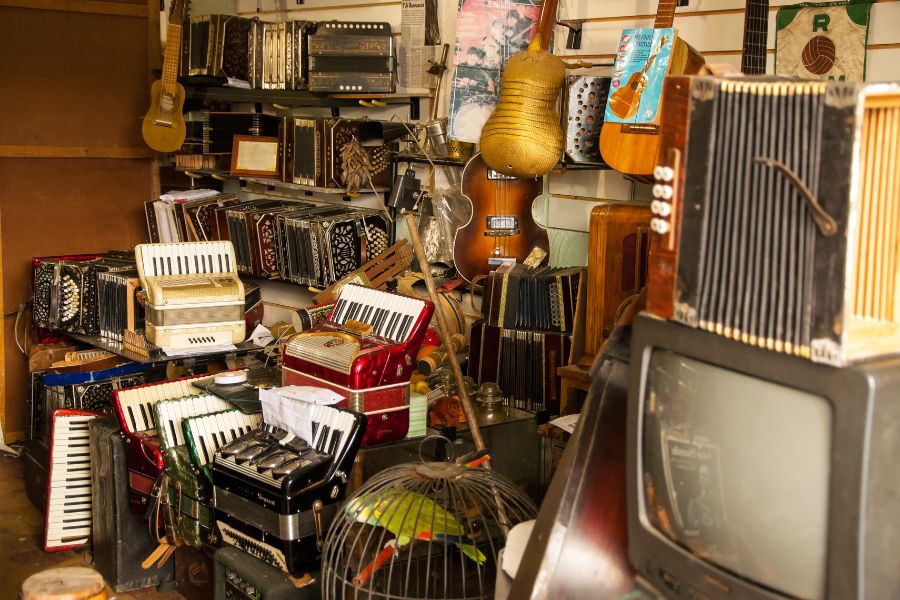Hey there, fellow gearheads! Whether you’re ditching that old axe for a shiny new one or just trying to clear some space in your rehearsal dungeon, selling your music gear can be a total game-changer. But let’s face it, it ain’t as simple as putting up a flyer on the community board. You’ve got to know where to sell, how to market your listing and handle the nitty-gritty of shipping. So, let’s dive into the nitro-fueled world of music gear sales and lay out some of our favorite seller strategies.
How Can I Promote My Gear Online?
First off, you’ve got to pick your battleground. Here’s the lowdown on the best spots to offload your gear. We warn you: we have a clear favorite.
1. Reverb.com: This place is the holy grail for musicians. Reverb is the ultimate marketplace for buying and selling instruments and gear. It’s like the backstage of a major festival – packed with folks who know their stuff and are ready to spend. Plus, they’ve got seller tools, low fees, and an interface that even your grandma could navigate. If you’re serious about selling, Reverb is your mosh pit. Here are a few of the pros and cons of selling on Reverb.com.
2. eBay: The OG of online selling. eBay’s massive audience means more eyeballs on your gear. It’s not exclusively for music stuff, but it’s versatile with auction and buy-it-now options that can help you move that gear fast.
3. Facebook Marketplace: Your mom might use it to sell her old knitting gear, but don’t sleep on it for music gear. It’s easy to use, and you can leverage your social network to move your gear locally.
4. Specialized Forums and Communities: If you’re deep into the scene, hit up places like Gearslutz or The Gear Page. These niche communities are packed with die-hard enthusiasts looking for their next piece of kit. They know if there’s a difference between guitar and bass pedals. In fact, they’re the community thinking about these ideas. Of course, Reverb.com can also apply here if you want a slightly broader scope.

Top Seller Strategies
Alright, you’ve picked your platform. Now, let’s make your listing scream, “BUY ME!”
- Detailed Descriptions: Lay it all out there. Make, model, year, condition, mods, repairs – the whole shebang. Honesty is key. If it’s got a gnarly scar from that one gig, say so.
- Keywords: Think like a buyer. Use terms they’d search for. “Gibson Les Paul 2016 Electric Guitar Mint Condition” beats “Guitar for Sale” any day. SEO, baby!
- Pricing: Do your homework. Check out what similar gear is going for and price yours competitively—factor in condition and market demand. And don’t forget those pesky platform fees.
- Photos: Shiny photos are a must. Use natural light, a clean background, and show every angle. Make your gear look like it just walked off a stage at Coachella. Don’t do that – it would look gross.
- Video Demos: If you can, throw in a video of you shredding on the gear. Nothing sells a guitar like seeing it in action.
Music Gear Photography Tips
Photos can make or break your sale. Here are a few tips on music gear photography to ensure your rock is rocked. Spoiler: they’re the same photography rules that apply anywhere.
- Lighting
- Background
- Angles
- Details
Natural light is your best friend. Avoid harsh shadows. You want your gear to look stage-ready, not like it’s been hiding in the shadows. Keep the background clean and simple. A cluttered background is just gonna distract from your beautiful gear. Shoot from multiple angles—close-ups of key features and any blemishes. Show the whole truth and nothing but the truth. Get those serial numbers, brand logos, and unique features. These are the money shots that prove authenticity.
Best Practices for Creating a Listing Online
- Honesty
- Details
- Promptness
- Clear Policies
Be honest, and don’t try to pull a fast one. Be upfront about the condition. Trust is everything in this game. Don’t skimp on the information. List all accessories that come with the gear—cases, straps, cables—it all matters. Speedy replies can seal the deal. Don’t leave potential buyers hanging. Lay out your terms for returns, refunds, and shipping. Clear terms keep everyone happy and reduce drama. Get the word out there. Here’s how to make some noise:
Blast your listings on social media like Instagram, Facebook, and Twitter. Use relevant hashtags to reach the right crowd. Post in relevant communities and forums. Just follow the rules so you don’t get booted for spamming. If you’re serious about selling, consider spending some cash on targeted ads. Facebook and Instagram ads can reach your ideal buyers. Using these tips helps you get back to the important things in life – like debating Ultimate Tabs versus Songsterr.
How Do I Handle Shipping for Items Sold Online?
Shipping music gear is a beast, but it’s manageable. Here are a few ideas for taming the beast and practically handling the shipping for the items you’ve sold online.
- Packaging: Use sturdy boxes and lots of padding. For guitars, use a hard case and add extra padding inside the shipping box.
- Shipping Services: Go with reliable services like UPS, FedEx, or USPS. Make sure they offer tracking and insurance.
- Insurance: Always, always, always insure high-value items. It’s worth it for the peace of mind.
- Tracking: Send the tracking number to your buyer as soon as possible. This will build trust and keep them in the loop.
- Shipping Costs: Be clear about who’s footing the shipping bill. You can either bake it into the price or list it as an additional cost.
Closing Out This Episode
Selling your music gear can be a total trip, but following these tips will make you come out on top. Choose the right platform (seriously, check out Reverb.com), craft killer listings, snap awesome photos, and handle shipping like a pro. Whether you’re offloading old gear to make room for new toys or just need some extra cash, these strategies will help you rock the selling game. So, gear up, get out there, and make some noise!


